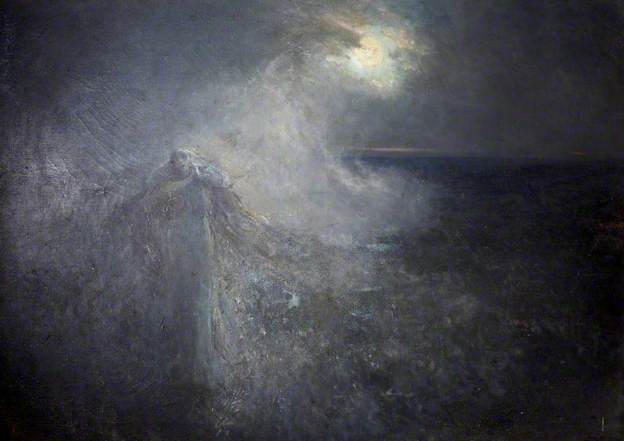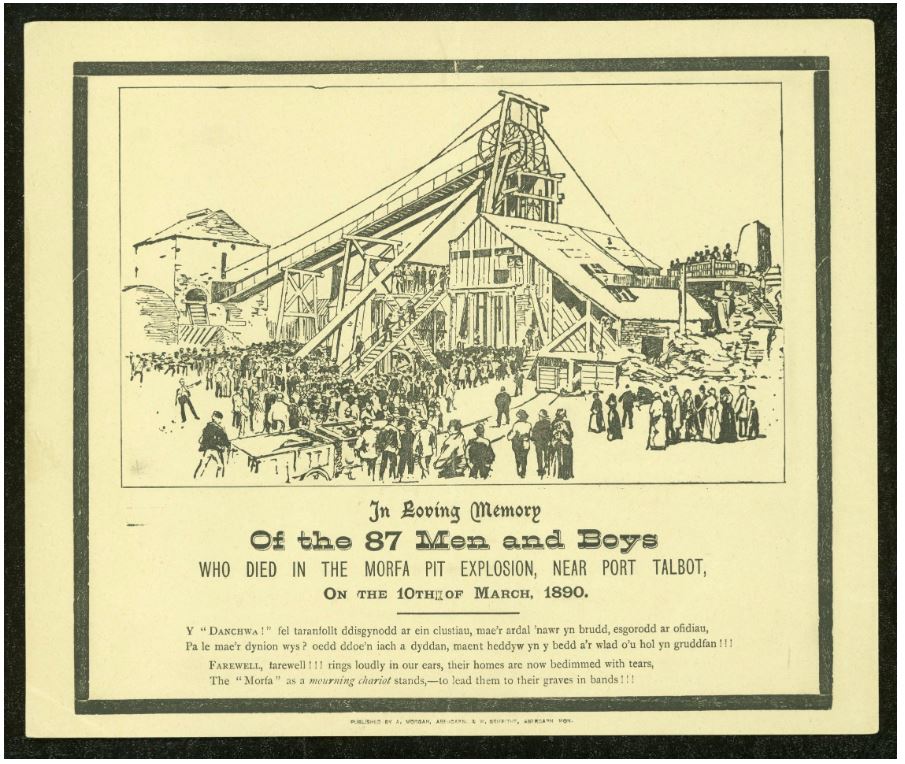
The Cry of the Banshee
There is now living in Bristol a Mrs. Linahan, an old Irish woman, who has not seen her own country for forty years. She is old, poor, bed ridden and suffering, but patient and cheerful beyond belief. Her strongest feeling is love for Ireland ,and she likes talking to me because I am Irish. Many a time, sitting in her little, close room, above the noisy street, she has told me about banshees and phookas and fairies, especially the first. She declares solemnly she once heard the cry, or caoin of a banshee.
“It was when I was a little young child,” she told me, “And knew nothing at all of banshees or of death. One day mother sent me to see after my grandmother, the length of three miles from our house. All the road was deep in snow, and I went my lone – and didn’t know the grandmother was dead, and my aunt gone to the village for help. So I got to the house, and I see her lying so still and quiet I thought she was sleepin’. When I called her and she wouldn’t stir or speak, I thought I’d put snow on her face to wake her. I just stepped outside to get a handful, and came in, leaving the door open, and then I heard a far away cry, so faint and yet so fearsome that I shook like a leaf in the wind. It got nearer and nearer, and then I heard a sound like clapping or wringing of hands, as they do in keening at a funeral. Twice it came and then I slid down to the ground and crept under the bed where my grandmother lay, and there I heard it for the third time crying, “Ochone, Ochone,” at the very door. Then it suddenly stopped; I couldn’t tell where it went, and I dared not lift up my head till the woman came in the house. One of them took me up and said: “It was the banshee the child heard, for the woman that lies there was one of the real old Irish families – she was an O’Grady and that was the raison of it.’” English Magazine
Aberdeen [SD] Daily News 18 May 1887: p. 4
Mrs Daffodil’s Aide-memoire: Clapping and keening were a feature of Irish funerals; professional keeners called bean chaointe would cry of the merits of the deceased and the broken hearts of those left behind.
The “raison of it” was that banshees were said to be attached only to the oldest, noblest Irish families, usually meaning those prefaced by “O’” or “Mac.”
In some cases, families have been apprised of an approaching death by some strange spectre, either male or female, a remarkable instance of which occurs in the MS. memoirs of Lady Fanshaw, and is to this effect: “Her husband, Sir Richard, and she, chanced, during their abode in Ireland, to visit a friend, who resided in his ancient baronial castle surrounded with a moat. At midnight she was awakened by a ghastly and supernatural scream, and, looking out of bed, beheld by the moonlight a female face and part of the form hovering at the window. The face was that of a young and rather handsome woman, but pale; and the hair, which was reddish, was loose and dishevelled. This apparition continued to exhibit itself for some time, and then vanished with two shrieks, similar to that which had at first excited Lady Fanshaw’s attention. In the morning, with infinite terror, she communicated to her host what had happened, and found him prepared not only to credit, but to account for, what had happened.
“A near relation of mine,” said he, “expired last night in the castle. Before such an event happens in this family and castle, the female spectre whom you have seen is always visible. She is believed to be the spirit of a woman of inferior rank, whom one of my ancestors degraded himself by marrying, and whom afterwards, to expiate the dishonour done his family, he caused to be drowned in the castle moat.”
This, of course, was no other than the Banshee, which in times past has been the source of so much terror in Ireland.
However, sometimes embarrassing errors occurred.
Amongst the innumerable stories told of its appearance may be mentioned one related by Mrs. Lefanu, the niece of Sheridan, in the memoirs of her grandmother, Mrs. Frances Sheridan. From this account we gather that Miss Elizabeth Sheridan was a firm believer in the Banshee, and firmly maintained that the one attached to the Sheridan family was distinctly heard lamenting beneath the windows of the family residence before the news arrived from France of Mrs. Frances Sheridan’s death at Blois. She adds that a niece of Miss Sheridan’s made her very angry by observing that as Mrs. Frances Sheridan was by birth a Chamberlaine, a family of English extraction, she had no right to the guardianship of an Irish fairy, and that therefore the Banshee must have made a mistake.
Strange Pages from Family Papers, T.F. Thistelton-Dyer, 1895
Mrs Daffodil and that person over at Haunted Ohio are both fascinated by tales of banshees. It is always useful to know one’s death omens. For other stories of banshees, both knocking and shrieking, please see A Banshee in Indiana, The Banshee of the O’Dowds, The Banshee Sang of Death, and A Banshee at Sea
Mrs Daffodil invites you to join her on the curiously named “Face-book,” where you will find a feast of fashion hints, fads and fancies, and historical anecdotes
You may read about a sentimental succubus, a vengeful seamstress’s ghost, Victorian mourning gone horribly wrong, and, of course, Mrs Daffodil’s efficient tidying up after a distasteful decapitation in A Spot of Bother: Four Macabre Tales.
Chris Woodyard is the author of A is for Arsenic: An ABC of Victorian Death, The Victorian Book of the Dead, The Ghost Wore Black, The Headless Horror, The Face in the Window, and the 7-volume Haunted Ohio series. She is also the chronicler of the adventures of that amiable murderess Mrs Daffodil in A Spot of Bother: Four Macabre Tales. The books are available in paperback and for Kindle. Indexes and fact sheets for all of these books may be found by searching hauntedohiobooks.com. Join her on FB at Haunted Ohio by Chris Woodyard or The Victorian Book of the Dead and on Twitter @hauntedohiobook. And visit her newest blog The Victorian Book of the Dead.






